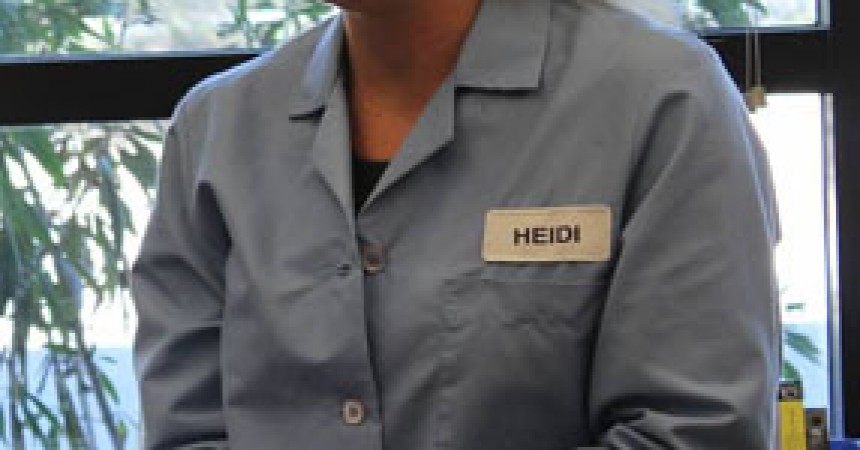
Our presenter, Ms. Heidi Davis, is a research coordinator at the San Diego Zoo Beckman Center. Ms. Davis has currently been working at the Beckman Center for over 14 years, and works in the genetics cytogenetic department looking at DNA for different research projects.

This is an example of when a specific DNA sequence is copied. After a DNA sample is extracted in the DNA extraction room, it is then sent to the PCR lab for DNA and RNA replication to amplify the selected region. The selected region is amplified when a geneticist is studying a specific part of a DNA of an animal. By isolating the specific region of the DNA or RNA sample and forcing it to replicate itself billions of times over, a geneticist can study pathogens or diseases that affect a specific part of the DNA or RNA.

These centrifuges are used for the separation of liquids that have different weights. In the genetics lab the centrifuges are used to separate blood cells from plasma cells in order to extract DNA. These two centrifuges are actually some of the oldest of their kind that are still in use today.

This is the DNA fridge in the genetics lab. Different types of animal DNA are stored in this fridge because the cold temperature keeps the DNA from breaking apart. Some of the samples kept in this fridge are over 50 years old! Some of the samples of animal DNA kept in the fridge include reptiles, birds, mammals, and even some endangered species. These samples can be taken and used for things like sexing animals, checking hormone rates, and even determining if an animal has a genetic disease.

This is a genetic sequence analyzer, a very valuable tool for genetic studies with micro sequencing and microsatellite analysis capabilities. Micro sequencing is when a very small amount of protein is taken from an animal and screened through this machine to make a DNA library of known and unknown samples, as well as for cloning the DNA. The genetic sequence analyzer is used to automate the DNA sequencing process that would take a single geneticist hours to do by hand. Additionally, similar machines are even used by police to match different DNA samples found at crime scenes.

These are different samples taken from animals that are waiting for DNA extraction, these samples are taken in a way that is not harmful to the animals. The samples shown are feathers, skin cells, fecal samples, urine, hair, eggshell, and blood. These samples will have DNA extracted and later sent to PCR lab for further study. From these samples geneticist can determine things such as the sex of the animal, whether the animal has a genetic disease, or even if the sample animal is genetically fit for breeding.
Devin, Photo Team
Week Six, Winter 2015


